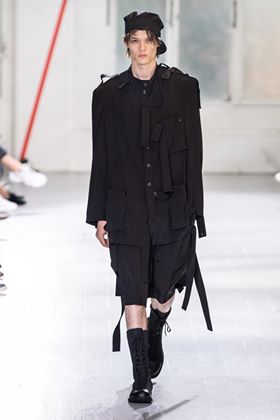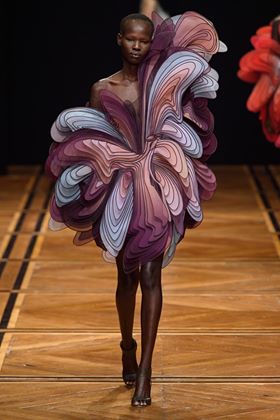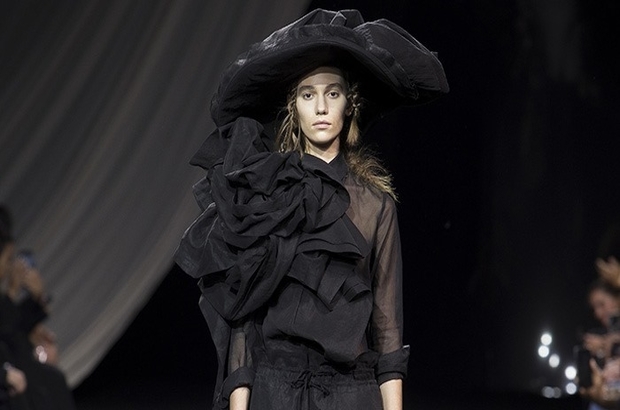ROSE DODD explores the neuroscience behind the creation and perception of fashion.
Fashion can reflect wider society and contemporary politics, but it can also rebel against the norms and mock normative ideology. Even though fashion is an important form of expression, it is often looked down upon as ‘superficial’ or ‘shallow’. So let’s take a look at fashion and style on a neural level to dispel this myth. Through exploring the level of thought behind fashion and its appreciation, whilst delving deep into the circuitry behind creativity and craftsmanship, it will become clear that such a perception of fashion is merely a misunderstanding.
A carefully constructed outfit will speak prior to and often louder than its wearer. People represent their thoughts and feelings through the garments, styles and colours that they wear. This has been the case throughout history. Take, for example, a mourner, traditionally pictured in black – a colour closely associated with melancholy. During the Tudor dynasty, sovereigns would wear extravagant clothing made from the lavish fabrics, dyed with expensive colours such as gold and purple, in order to assert their wealth. This relegation of specific colours and fabrics to a select few people amongst the upper-class elites gives us an insight into the ways in which fashions of a time can reflect contemporary society as a whole.
Today, too, the clothes we wear speak volumes for who we are and where we stand in societal rankings. Suits, for example, assert professionalism, self-importance or superiority; and when worn on women they quietly defy old-fashioned hierarchical ideas about what women should wear. Minimalist ensembles reflect a person’s desire for simplicity and sensibility, while playful outfits featuring micro bags or oversized shoes can reflect a person’s playful personality. Our identities are manifested in the way we choose to dress. Fashion provides a venue for people to distinguish themselves from others and communicate without words.
Art Specialist Dr. Gene Sherman argues that there is a lot more intellect behind fashion than what is often perceived. Sherman points out that much can be learned of the complexities of fashion design when we explore the complex technical features of a garment’s architecture. For instance, look at the thought and skill behind Yohji Yamamoto’s avant-garde tailoring, combined with use of traditional Japanese techniques. Furthermore, not everyone is capable of creating designs and choosing garments worthy of a dramatic double-take. It requires skill, coordination and a creative mind: a perfect balance between irrational thought and controlled execution.

Professor Anna Abraham and her colleagues ran a study in an attempt to understand the neural networks that make some people more creative than others. They used divergent thinking tests to measure creative thinking ability, asking participants to think of new and unusual ways to use standard objects. She gives the example of a sock: while some might say ‘to keep feet warm’, a more creative answer would be ‘to filter water’. The results showed that those who gave more unusual answers tended to have creative hobbies. Furthermore, during the tasks, the participants underwent fMRI scanning, and the scans of those with more creative answers showed activation consistent with scans of professional artists, musicians and poets. These scans showed evidence of altered wiring in the creative brains which allowed these people to engage systems that don’t typically work together. This further shows the intelligence behind the creativity of fashion design.
We now know more about the neuroscience behind garment design, but what determines which garments and trends an individual enjoys?
Neuroaesthetics describes the biological and psychological mechanisms that are utilised when we enjoy and interact with objects. Fashion is a form of art that personally engages with people: We enjoy it. It pleases us. Liking, enjoying and the feelings of pleasure are associated with activation of the reward pathway. The release of dopamine through this pathway facilitates reward and may be involved with the subjective perception of pleasure. Dr Bunzeck and colleagues showed that this circuit is stimulated when presented with something new, explaining why we enjoy exciting new fashion trends.
Neuroaesthetics are not limited to the reward system alone though; interactions between multiple neural systems including emotion-valuation and meaning-knowledge circuitry can cause us to like an object, and sensory systems which experience elements such as shape and colour also play a role. Semir Zeki, Professor of Neuroaesthetics at UCL, views art as an example of the variability of the brain. What we enjoy is subjective to our previous experiences. Each individual has a unique set of experiences that influences their perception of the world; this information is then processed alongside the visual interpretation of the object at hand, the outcome determining whether or not the individual enjoys something. This can often explain a person’s unique fashion choices.
How we perceive colours, shapes, and contours relies on processing by visual centres in the brain. The manipulation and interpretation of visual features is facilitated by connections within the brain which recruit emotional inputs and other relevant stimuli that might affect how we perceive a visual stimulus. This explains why some people prefer different colours and styles.

Fashion is concomitant with art. It requires deep neural computation to create and perceive. Our perception and taste is subjective to our neural wiring, which adapts during our individual, evolutionary experiences of the world. The fashion industry brings excitement, community, and joy. It’s a celebration of people, beauty and creation. The industry also provides a powerful platform for conveying important messages – such as the LGBTQ+ Rights activism embedded in Ashish’s AW/17 collection. Clearly, fashion goes much deeper than this misperceived externality. Just like anything in life, fashion is a skill that comes with practice and neural fine-tuning.
Featured image courtesy of designscene.net.





